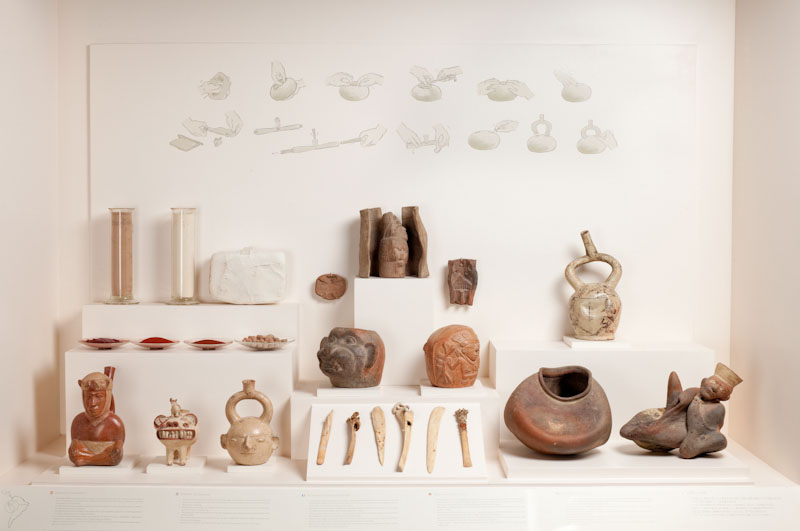Pottery Technology
Room 3, Vitrine 21
Ceramic and bone
Peruvian Northern Coast
Florescent Epoch (1 AD – 800 AD)
ML012779, ML012780, ML012783, ML012784, ML012808, ML012812, ML012814, ML012815, ML012816, ML012820, ML031795, ML031948, ML031949, ML500056, ML500058, ML500059, ML500060, ML500061, ML500062.
The work of the potter demands control of every stage of production: the selection of the primary material, the preparation of the clay, the making of the object, decoration, drying, the finishing of the surface and firing.
The primary material for the making of Mochica ceramics consisted of red and cream-colored clays, as well as kaolin or white clay. The pigments used to give color to the slip and paints were mostly mineral-based, particularly ferrous oxides. Tools made from bones were used to decorate the ceramic after modeling. Molds and stamps were also used to apply some designs.
Some ceramic objects were flawed, but they were still conserved by ancient Peruvians.
